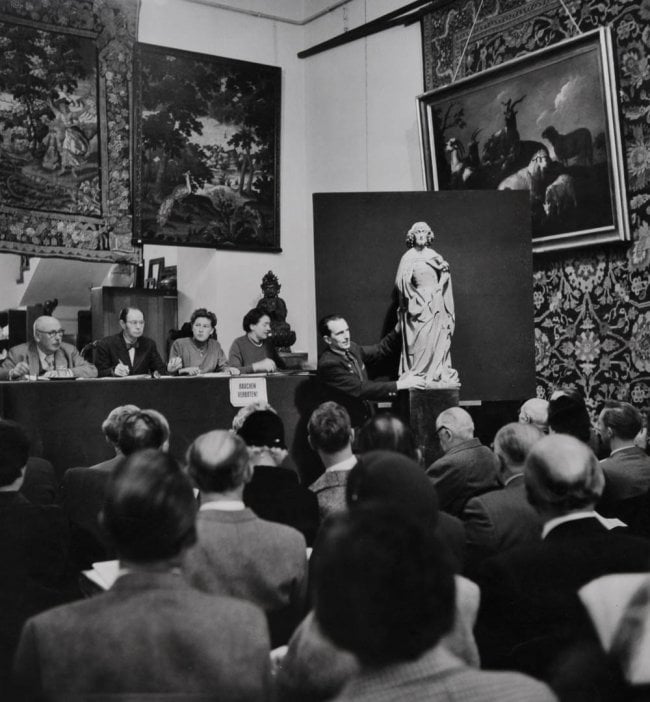
A sale at the Munich auction house Weinmüller (October 1954).
Photo: Peter Keetman, © F.C. Gundlach Foundation.
Sale records from Nazi-era auction house Weinmüller, which trafficked in art looted from Jewish owners, are now available online at Germany’s Lost Art Database.
The annotated catalogues of Adolf Weinmüller’s Munich and Vienna auction houses from 1936–45 were released online this week. There are 93 volumes detailing the sales, many of which involved assets from Jewish art dealerships shut down under the Nazi regime or the personal property of Jewish collectors who were forced to sell their belongings.
Some 34,500 objects were sold by Weinmüller during this period in 33 Munich auctions and 18 Vienna sales. For each lot, the catalogues list the buyers, sellers, and sale price. Information about the buyers has not been made publicly available online, but can be revealed on request.
Weinmüller began selling art in 1921 and joined the Nazi party in 1931. His business grew as he worked with the Reich Chamber for Fine Arts, which promoted Aryan artists and dealers while suppressing Jewish ones.
Thanks to his support of the Nazi party, Weinmüller absorbed two Jewish-run auction houses: Munich’s Hugo Helbing, in 1931, and Vienna’s Samuel Kende two years later. During this period of growth, Weinmüller’s clients included Martin Bormann, Adolf Hitler’s private secretary.
The Monuments, Fine Arts, and Archives division of the US Army, dedicated to tracking down looted art, investigated Weinmüller after the war, but the dealer claimed that his records had been destroyed. In 1958, Weinmüller sold his by-then struggling business to Rudolf Neumeister. It was a Neumeister employee that discovered the hidden documents last year.
Under an agreement with the auction house’s director, Neumeister has lent the catalogues to Germany’s Zentral Institut für Kunstgeschichte (the central institute for art history), which has made them available on the Lost Art website.
Given the large number of records, it seems plausible that the Weinmüller catalogues could lead investigators and Sunday provenance sleuths to the next Gurlitt looted art trove.